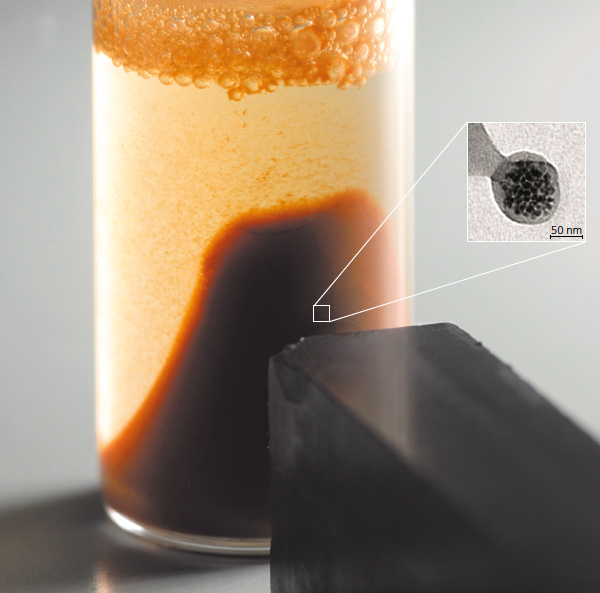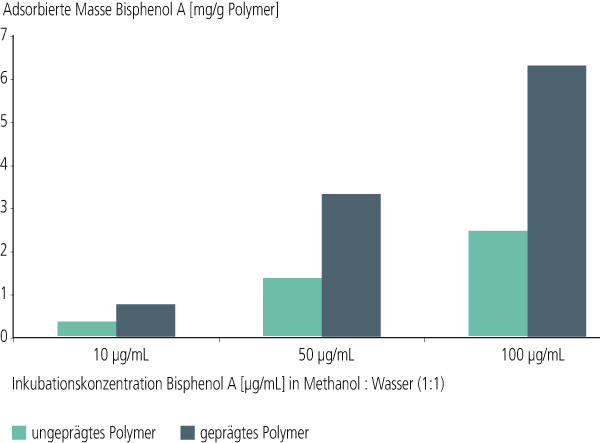Active pharmaceutic ingredients are necessary to fight illnesses, but we would not want to see them in our drinking water. However, many drugs are not or not effectively decomposed in the biological stages of the sewage plants. What is more, as these pharmaceuticals and their metabolites are highly water-soluble, they are not strongly bound to the sediments. Consequently, they travel from contaminated surface waters all into the groundwater. Over 100 different active pharmaceutical ingredients have so far been identified in the aquatic cycle, some with concentrations above the ecotoxicological no-observed-effect concentration (NOEC). The decomposition of pharmaceuticals using physicochemical methods, such as ozonolysis and adsorption to activated carbon, is either rather costly or the process itself produces toxic decomposition products.
Synthetic adsorbers for the removal of environmental pollutants
Specific adsorbers for water purification

The Fraunhofer IGB pursues a completely new approach: polymeric materials are prepared in a nanostructured fashion as selective adsorbers for specific molecules and molecule groups.
For the selective removal of micropollutants from wastewater – this includes analgesics / antiphlogistics, antiepileptics and beta-blockers – we have, by way of example, developed nano- and microstructured adsorbers for use against the widespread substances diclofenac and pentoxifylline. In a project funded by the Ministry of the Environment of the State of Baden-Württemberg it was possible to demonstrate on model solutions that one gram of the particles can adsorb up to 500 µg pentoxifylline. Field trials were carried out with the adsorber particles using real hospital wastewater from the RBK (Robert Bosch hospital), Stuttgart, which was treated in a wastewater treatment plant run by the Fraunhofer IGB.
The specific adsorber particles with an average diameter of 200 nm can be incorporated into a membrane, for example for the adsorption of the pollutants by means of a filtration process. When the beads are also equipped with a magnetic core, the adsorber particles – and thus the bound pharmaceuticals – can be caught by a magnetic separator.
WaterMIM – adsorber particles binding bisphenol A

Bisphenol A (BPA) has an estrogenic action and has been detected in the sewage sludge of German communal purification plants, in landfill leachate and also in drinking water. To improve this situation, the Fraunhofer IGB developed both nano and microstructured synthetic adsorber polymers to deal with the widely
used bisphenol A.
Funding
The project "Specific elimination of environmental pollutants with adsorbers made of nanostructured synthetic materials" was funded by the Ministry of the Environment of the State of Baden-Württemberg within the program "Betriebliche Umwelttechnik" (Environmental Technologies at Factory Level).
The project "WaterMIM" was funded by the European Union and carried out in cooperation with the University Stuttgart IGVT.
 Fraunhofer Institute for Interfacial Engineering and Biotechnology IGB
Fraunhofer Institute for Interfacial Engineering and Biotechnology IGB